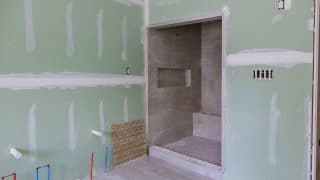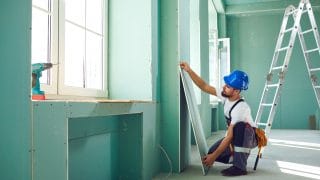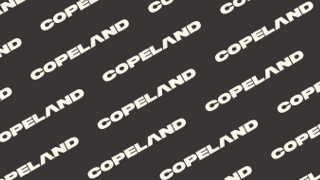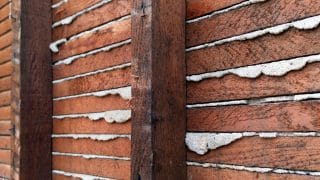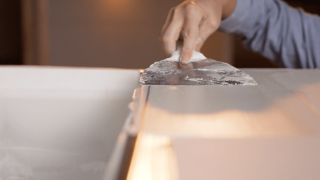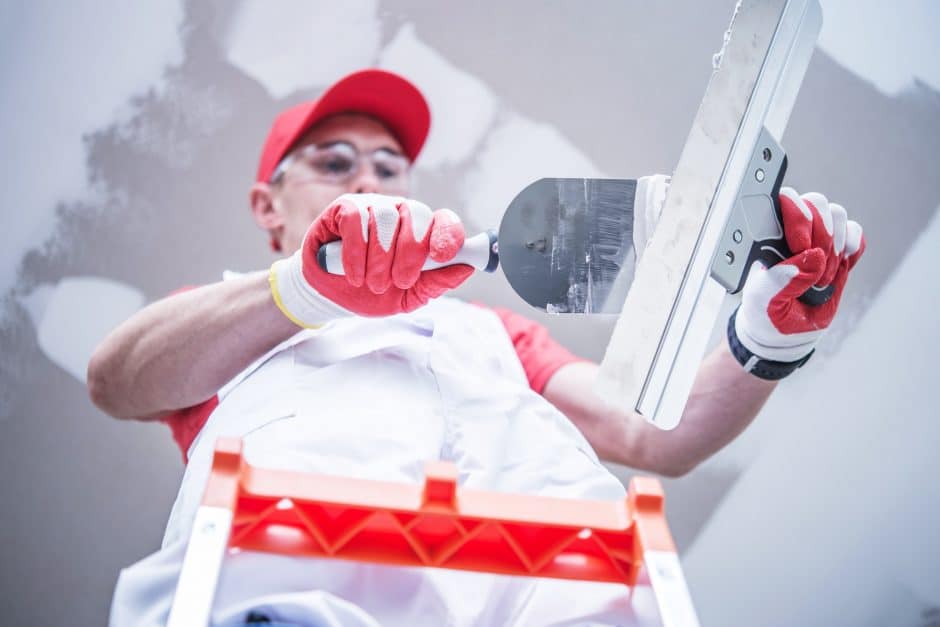
Joint compound, commonly known as “mud,” is a paste that serves several purposes in the drywall-finishing process: It’s the glue that holds drywall together, patching over any screws, seams or joints; it acts as an adhesive between drywall tape and drywall board; and helps to prepare drywall surfaces for paint. Joint compound is one of the most important components to finishing drywall, and mudding—the process of applying it—is something you’ll do multiple times over the course of a drywall installation.
What is joint compound?
Joint compound is made from ground gypsum, a sulfate mineral present in everyday items like toothpaste and dinnerware. It typically comes in powdered or premixed form. Both powdered and premixed joint compounds often contain additives that help make the mud smoother and more resistant to moisture and mildew. Joint compounds have different ratios of additives and gypsum that affect drying times. The more gypsum a joint compound has, for example, the faster it will dry.
Powdered (hot mud)
Powdered mud, also known as hot mud, needs to be mixed with water before application. Once the hot mud is mixed, you have a limited amount of time to work with it since it’s a high-gypsum, quick-setting mud. (It usually takes about 20 to 60 minutes to dry, depending on the mud’s other additives.)
Hot mud is ideal for coating and pre-filling joints on drywall since it expands as it dries, filling gaps. It’s handy for beginners since you can easily manipulate its consistency with water, and there’s the option to work with a thinner or thicker mud, depending on your preference. Because it dries so firmly, hot mud can be harder to sand than premixed compounds and shouldn’t be used beyond the first coat in a drywall finish.
Drywall Finishing
Joint compound, commonly known as “mud,” is a paste that serves several purposes in the drywall-finishing process: It’s the glue that holds drywall together, patching over any screws, seams or joints; it acts as an adhesive between drywall tape and drywall board; and helps to prepare drywall surfaces for paint. Joint compound is one of the most important components to finishing drywall, and mudding—the process of applying it—is something you’ll do multiple times over the course of a drywall installation.
What is joint compound?
Joint compound is made from ground gypsum, a sulfate mineral present in everyday items like toothpaste and dinnerware. It typically comes in powdered or premixed form. Both powdered and premixed joint compounds often contain additives that help make the mud smoother and more resistant to moisture and mildew. Joint compounds have different ratios of additives and gypsum that affect drying times. The more gypsum a joint compound has, for example, the faster it will dry.
Powdered (hot mud)
Powdered mud, also known as hot mud, needs to be mixed with water before application. Once the hot mud is mixed, you have a limited amount of time to work with it since it’s a high-gypsum, quick-setting mud. (It usually takes about 20 to 60 minutes to dry, depending on the mud’s other additives.)
Hot mud is ideal for coating and pre-filling joints on drywall since it expands as it dries, filling gaps. It’s handy for beginners since you can easily manipulate its consistency with water, and there’s the option to work with a thinner or thicker mud, depending on your preference. Because it dries so firmly, hot mud can be harder to sand than premixed compounds and shouldn’t be used beyond the first coat in a drywall finish.
Premixed
As the name suggests, these muds come premixed with water and do not require additional liquid for preparation. They’re typically ready to use out of the box and don’t try quickly like hot mud. Sometimes, depending on the weather, premixed mud can take several days to completely dry, which can cause delays. Premixed muds are ideal for taping, use with automatic tools like boxes and automatic tapers, and coating.
The most common premixed muds you’ll find are all-purpose, lightweight all-purpose, taping, and topping compounds.
- All-purpose compounds are the most versatile. They can be used in every stage of the drywall-finishing process and applied with hand tools, like hawks and trowels and automatic tools. All-purpose compounds are popular with drywall beginners or DIYers because they are so simple to use, come in large quantities like five-gallon buckets, and last a long time.
- Lightweight all-purpose compounds are a specialty version of all-purpose. These are ideal for coating tape and corner bead, a plastic or metal material that lines the corners of drywall for reinforcement. Lightweight all-purpose compounds are easy to sand, but scratch more easily.
- Taping compounds use paper tape. Because drywall boards are paper-faced and paper tape is made of paper, taping compounds contain glue additives to help them adhere to each other. They tend to be thicker than other premixed compounds and should be slightly watered down before taping to prevent clumping. Taping compounds are best used with a sticky consistency.
- Topping compounds are fluffy, smooth, and sand easily. These contain fewer additives and adhesives than taping compounds, making them ideal for texturing or feathering. Topping compounds should be applied on the second or third coat of a drywall finish, and each coat of mudding should be thinner than the last to achieve a clean finish. Topping compounds can be used up to a level five drywall finish.
Mesh tape vs. paper tape
Drywall tape covers the spaces between drywall sheets, like flats, joints, corners, or butts (where two non-tapered sheets of drywall meet). Taping ensures smooth surfaces and a uniform look across the wall or ceiling. It also reinforces exposed areas like corners. There are two different types of tape: mesh and paper.
- Mesh tape is tacky and doesn’t require mud. It is flexible and easy to apply, but not as sturdy as paper tape. It is mostly used to patch holes in the drywall or cover small indents.
- Paper tape is ideal for streamlining drywall sheets. It is versatile, durable, and holds its shape well with a taping compound. To begin taping, apply taping mud along the joint, then place and press drywall tape over it. Wipe away excess mud. Coat the tape with a layer of topping compound—a powdery mud mixed with water—once the taping mud has dried.
MT Copeland offers video-based online classes that give you a foundation in construction fundamentals with real-world applications, like installing drywall. Classes include professionally produced videos taught by practicing craftspeople, and supplementary downloads like quizzes, blueprints, and other materials to help you master the skills.
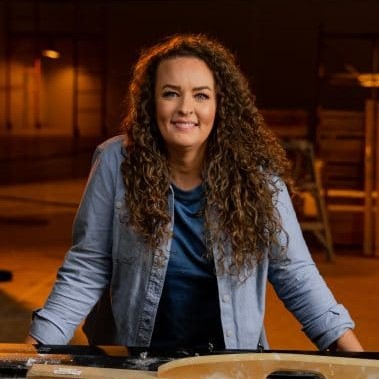
Featured Instructor
Lydia Crowder
Lydia Crowder is a second generation drywall finisher. She started helping out her dad with the family business as a kid and quickly grew to love it. Her dad instilled a love for quality, craftsmanship, and sharing knowledge. She has over 18 years of experience in the field and runs Trinity Drywall with her husband Ryan. Together they finish over 500,000 square feet of drywall board a year: that's an average of a house a week. Lydia started sharing drywall tips and tricks on Instagram under the name DrywallShorty and the response was explosive. There is a huge lack of basic knowledge in the industry and Lydia has become a go-to for professionals and DIY-ers alike.
Explore Classes
